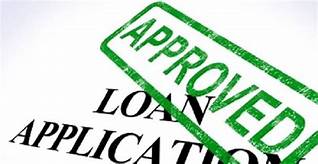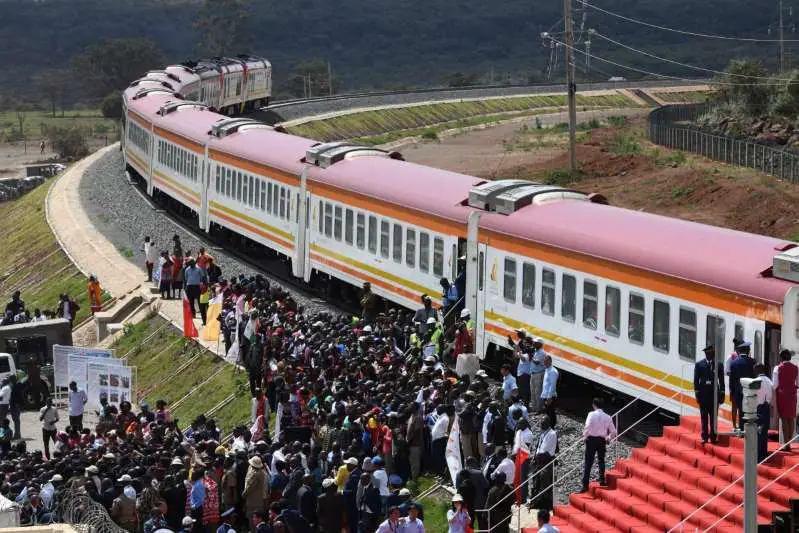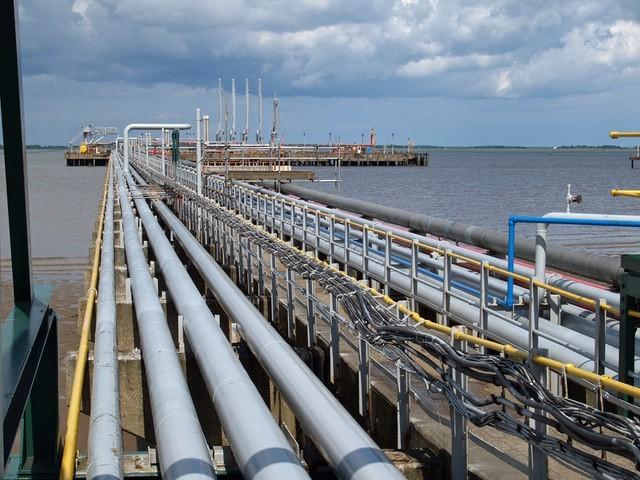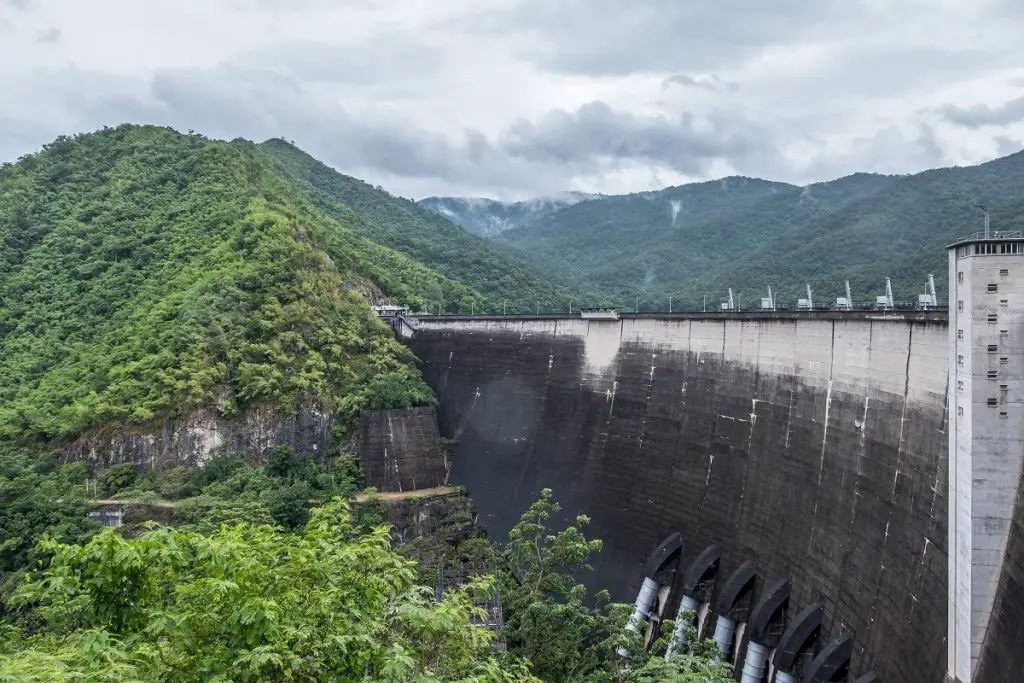- Pullman Hotel Nairobi: French hospitality firm Accor to Open 1st Premium Brand in Kenya
- Investors tip Abu Dhabi as the next tech powerhouse globally
- Unlocking global investment: insights from the ministerial roundtable at AIM Congress 2024
- UN Tourism empowers women entrepreneurs at AIM 2024
- Kenya’s business conditions stabilised in April but heavy rains a concern for Q2
- Floods Sweep Away Billions in Economic Gains in Kenya and Tanzania
- Chapa Founder’s insight: Africa’s startup evolution mirrors China’s growth trajectory
- Sustainable solutions: AIM Congress 2024 focuses on agriculture, health and investment
Month: July 2020
The Black Lives Matter movement has brought the weight of social unrest upon almost all big economies around the world and in Africa, it has spark the Africa Lives Matter movement.
Protesters in the US, UK, France, Germany, Africa and elsewhere have caused huge economic impact during their protests and brought to light even larger economic inequalities that are bound to cause a major power shift in the years to come.
While the death of George Floyd in the hands of police wrought on the US political convulsion, it is the economic inequalities that have a lasting and profound effect. Issues of housing, education, health and employment have been pushed to the forefront of the national consciousness.
Take for instance the fact that in just one US city, the cream of the pie, the top 1 percent of New York’s elite actually earns well over 40 times more than the …
After slow production during the Covid-19 lock down, Zimbabwe’s gold sector has had a drastic come back reporting gold revenue is up almost 50 percent at least one of its major mines.
The total revenue recorded for the second quarter of 2020 clocked and impressive to USD23. 6 million, that is almost double (48 percent) the revenue brought in during the same period last year.
Having topped last year’s production by USD15. 9 million, Blanket Gold Mine that is based in the Gwanda region, increased production all through the first quarter this despite glitches caused by the Covid-19 pandemic.
The mine is owned by the Caledonia Mining Corporation and was proud to announce it had produced 14,233 ounces of gold in the second quarter up from the 11,948 produced during the same period last year.
The production level is very impressive given the fact that other miners could not access …
Ethiopia’s Jobs Creation Commission has partnered with the MasterCard Foundation to conduct a US$11.8 million job creation initiative dubbed Enabling Ethiopia.
The five-year project is meant to serve as one of the country’s implementing tools for Ethiopia’s Plan of Action for Job Creation (PAJC – 2020-2025). The project aims at fostering innovation, policy reform, inclusiveness and advocacy.
The ambitious project looks to create some 14 million jobs by 2025 by creating an entrepreneurial ecosystem, cultivating the necessary human capital, adopting pro-job macro policies, and supporting inclusive innovations; these are just some of the major focus areas of this long-term plan.
The goal is to have a private sector-led economy that is coordinated and supported by the government. The project aims to support the adoption of job-rich macro policies and the implementation of innovative job creation programs.
To achieve this, the initiative acknowledges the need to build capacity of implementing …
Kenya is heavily in debt; granted it is not the only East African country to find itself neck deep in debt but it certainly is the only one trying to raise the debt ceiling, every subsequent administration.
Last year, President Kenyatta appointed a new economist to lead the country’s National Treasury and just like his predecessor, his first order of business was to seek constitutional amendment so that the country could borrow more.
As of October 2019, Kenya’s legislators had been swayed to raise the country’s debt ceiling to USD 84.5 billion (Sh9 trillion). All is good when the money is flowing in, but when the roosters come home to roost and the cash flow takes an outward projector, the weight of it all starts to sink in.
That is where Kenya has found itself—smack in the middle of paying a whopping USD8.5 billion (Sh904.7 billion) in debt servicing. Even …
Kenya is facing the daunting task of paying China a piling amount that it owes for the Chinese funded multibillion dollar Standard Gauge Railway (SGR).
Only a short while ago, the National Treasury asked parliament to allow it some US$940 million dollars to make its latest installment to pay to China.
After millions of dollars have been dumped into the Kenyan ambitious SGR project, now Kenya wants China back on the discussion table to revisit the terms. Sources say the amount covers interest and principal installments invested by the Chinese government and other entities including the Chinese Exim Bank and the China Development Bank.
It is no surprise that the Kenyan lawmakers want a sit-down with their Chinese counterparts to discuss the payment because the SGR is not making as much money as was projected. The plan was for the railway to carry goods from Mombasa port into landlocked Africa. …
At the onset of the pandemic, the two countries, like all others in the region and elsewhere in the world, Tanzania and Kenya closed their borders, for a while. However it soon dawned on both that closing their borders from each other (and their neighbours) was but a band-aid solution.
The underlying trade logistics are already so entwined that no country could do without the other, short of losing hard-gained economic ground. So, no sooner had they closed their borders than the two countries were forced to reopen them.
That is where the third set of complications surfaced; the first — the onset of the coronavirus — was not through any fault of the countries. The second — the closure of their borders in line with international recommendations — was in response to the first, and the third was the lack of a concerted, joint response.
It is the third …
Before the economic shock of COVID-19, world merchandise trade in 2019 was already slowing down due to trade tensions and decelerating economic growth.
According to the World Trade Organization (WTO), “the dollar value of world merchandise exports in 2019 fell by 3% to US$18.89 trillion”. Overall, world trade is expected to continue falling and will range between 13% and 32% in 2020, as the health crisis continues to disrupt world economies.
In addition to the economic disruption, so far, Coronavirus has left more than 200,000 people dead across the world, more than the fatalities recorded in the World War 11, as observed by the UN Secretary–General, Antonio Gueterres. The effects of the ‘Great Lockdown’ as perceived by the International Monetary Fund (IMF), is far beyond the effects of the 1930s Great Depression. With exception of businesses dealing in pharmaceuticals, life-saving amenities …
The job market is ever dynamic; continuously changing as a result of socio-economic and technological development. In recent months however, the changes experienced are neither as a result of economic nor technological advancement, but rather, the health crisis that has altered the daily lives of people around the world.
One of the major effects of COVID-19 on the labour market is the loss of jobs for hundreds of millions of people. In big economies, workers are benefiting from unemployment claims, but the same cannot be seen in developing countries in Africa where governments are grappling with means to mitigate the effects of the current pandemic.
Predictions from the UN’s International Labour Organization (ILO) show that up to “1.6 billion workers in the informal economy – that is nearly half of the global workforce – stand in immediate danger of having their livelihoods destroyed.”
According to the ILO Monitor …
For years, steamers carrying goods and passengers were the main transport mode across Lake Victoria moving from one country to another and easing cross border trade. In its hey days, Lake Victoria had over five functional ports: Kisumu being the largest, Mwanza, Musoma and Bukoba in Tanzania, Entebbe, Jinja and Port Bell all in Uganda. There were other minor ports scattered across the area including Kendu Bay, Port Victoria, and Mbita Point which were mainly used by smaller boats.
The lake was mainly used to move goods from one point to another, but also was instrumental in the growth of the fishing industry in East Africa. There were also international ferries operating clockwise and anticlockwise across the lake cities of the biggest lake in Africa, moving thousands of passengers every year. Initially, the ferries and ports were run under the East African Railways and Harbou…
It is almost impossible to run a business without power which makes it hard for the continent’s small businesses .…












